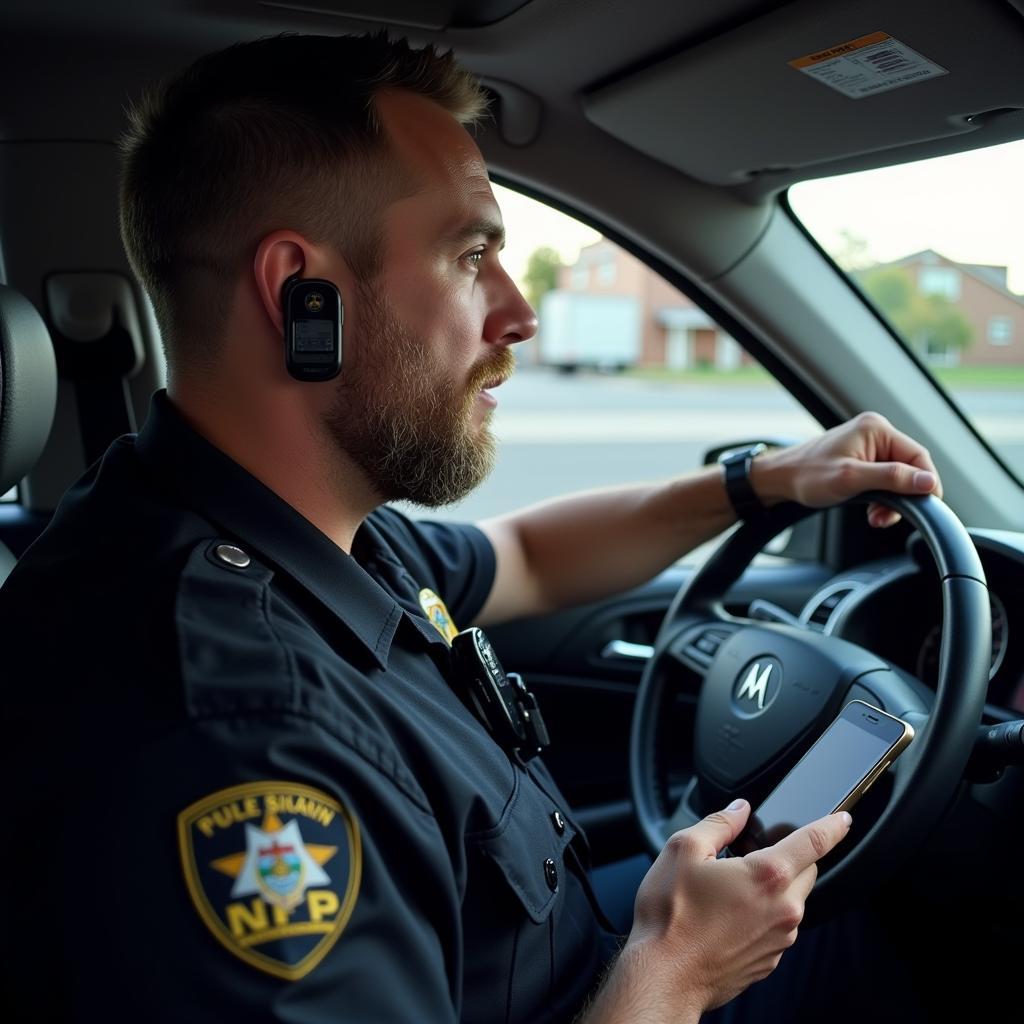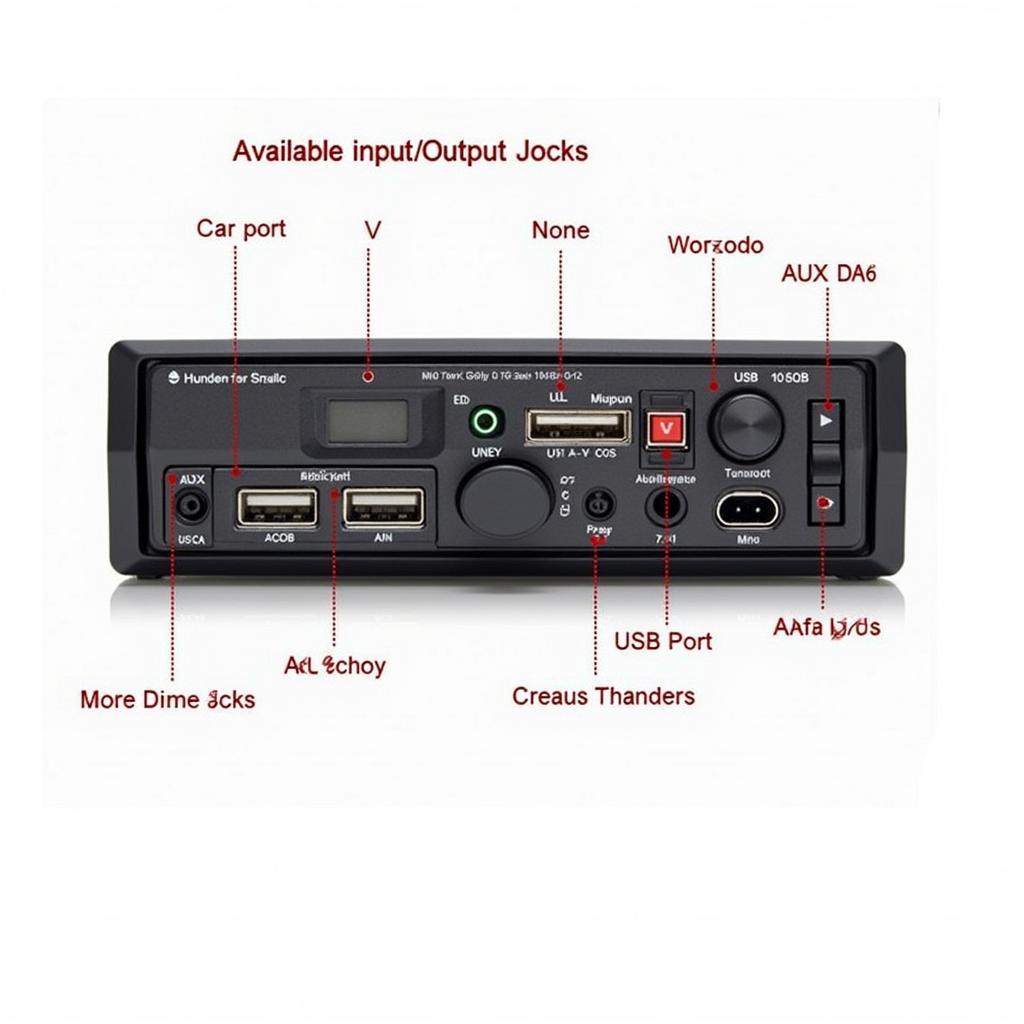Motorola Bluetooth in-car police radios have revolutionized communication for law enforcement. They offer seamless integration with other devices, improved audio clarity, and enhanced officer safety. This guide delves into the benefits, installation, troubleshooting, and future of these essential tools.
Understanding the Benefits of Motorola Bluetooth Police Radios
Integrating Bluetooth technology into police radios provides a multitude of advantages, boosting efficiency and safety. Hands-free communication is paramount, allowing officers to focus on driving and other critical tasks. Improved audio quality ensures clear transmissions, even in noisy environments. Furthermore, connecting to other Bluetooth devices like smartphones and laptops opens up opportunities for data sharing and real-time information access.
Enhanced Officer Safety with Hands-Free Operation
Hands-free operation significantly reduces distractions, contributing to safer driving conditions. This is crucial in high-stress situations where quick reactions are essential.  Motorola Bluetooth Police Radio Hands-Free Operation
Motorola Bluetooth Police Radio Hands-Free Operation
Crystal-Clear Communication with Advanced Audio Technology
Motorola’s advanced audio processing technologies minimize background noise and enhance voice clarity, ensuring vital information is communicated effectively. This is particularly important in chaotic environments where clear communication is essential for coordination and safety. Think of pursuits, emergencies, or large-scale events.
Installing Your Motorola Bluetooth In-Car Police Radio
Proper installation is critical for optimal performance. While professional installation is recommended, understanding the process can help troubleshoot potential issues. Typically, installation involves connecting the radio to the vehicle’s power system, integrating the antenna, and pairing with Bluetooth devices.
Step-by-Step Installation Guide
- Power Connection: Securely connect the radio to the vehicle’s power source, ensuring proper grounding.
- Antenna Integration: Connect the antenna cable to the radio, ensuring a tight and secure connection for optimal signal reception.
- Bluetooth Pairing: Follow the radio’s instructions to pair with desired Bluetooth devices, such as smartphones or laptops.
Common Installation Challenges and Solutions
Occasionally, problems can arise during installation. Poor antenna placement can lead to weak signal strength. Incompatible Bluetooth versions may prevent pairing. Double-checking connections and consulting the user manual can often resolve these issues.
Troubleshooting Motorola Bluetooth Connection Issues
Even with proper installation, Bluetooth connectivity issues can occur. Interference from other electronic devices can disrupt the signal. Low battery levels in paired devices can also cause problems. Understanding these potential issues can help you quickly find solutions.
Why Won’t My Motorola Bluetooth Connect?
Several factors can affect Bluetooth connectivity. Distance between devices, physical obstructions, and other electronic devices emitting radio waves can all interfere with the signal.
Quick Fixes for Common Bluetooth Problems
Restarting the radio and paired devices can often resolve minor connection issues. Ensuring the devices are within range and that there are no obstructions between them can also help. If problems persist, consulting the user manual or contacting technical support can provide further assistance.
The Future of Motorola Bluetooth in Car Police Radios
Motorola continues to innovate in the field of law enforcement communication. Future developments may include enhanced data integration, improved security features, and integration with emerging technologies like 5G. These advancements will further empower law enforcement agencies to effectively protect and serve their communities.
“The integration of Bluetooth technology has transformed police communication,” says John Smith, Senior Communications Engineer at Motorola Solutions. “We are constantly working to develop new features and capabilities that will further enhance officer safety and efficiency.”
Conclusion
Motorola Bluetooth in-car police radios are a crucial tool for modern law enforcement. Their benefits extend beyond communication, offering improved safety and efficiency. Understanding their installation, troubleshooting, and future potential is vital for maximizing their effectiveness. Stay informed about the latest advancements in Motorola Bluetooth in-car police radio technology to ensure your agency is equipped with the best tools available. By understanding the nuances of this technology, you can leverage its power to protect and serve.
FAQ
-
What are the main benefits of using a Motorola Bluetooth police radio? Hands-free communication, improved audio clarity, and seamless integration with other devices.
-
How do I install a Motorola Bluetooth in-car police radio? While professional installation is recommended, the basic steps include connecting the radio to power, integrating the antenna, and pairing with Bluetooth devices.
-
What are some common troubleshooting steps for Bluetooth connection issues? Restarting devices, checking for obstructions, and ensuring devices are within range.
-
What is the future of Motorola Bluetooth in car police radios? Enhanced data integration, improved security features, and integration with emerging technologies like 5G.
-
Where can I find more information about Motorola Bluetooth police radios? The Motorola Solutions website and authorized dealers are excellent resources.
-
Can I connect my personal smartphone to a Motorola Bluetooth police radio? While possible, it’s essential to follow agency policies regarding device pairing and security protocols.
-
How does Bluetooth technology improve officer safety? Hands-free communication reduces distractions, allowing officers to focus on driving and other critical tasks.



